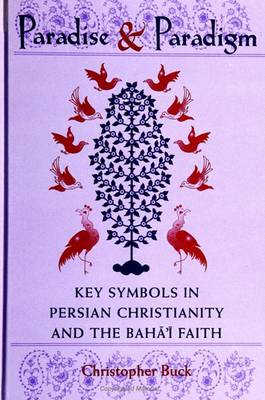
- Afhalen na 1 uur in een winkel met voorraad
- Gratis thuislevering in België vanaf € 30
- Ruim aanbod met 7 miljoen producten
- Afhalen na 1 uur in een winkel met voorraad
- Gratis thuislevering in België vanaf € 30
- Ruim aanbod met 7 miljoen producten
Paradise and Paradigm
Key Symbols in Persian Christianity and the Baha'i Faith
Christopher BuckOmschrijving
Comparing paradise imagery in two Persian religions, early Syriac Christianity and the Baha'i Faith, this work contributes to religious studies methodology by introducing "symbolic paradigm analysis."
In a novel approach that the author terms "symbolic paradigm analysis," Paradise and Paradigm offers a "theoretically modular" systematic comparison of two "Persian" religions: early Syriac Christianity as the foundation of the East Syrian "Church of the East" (the Nestorian Church of Persia) and the Baha'i Faith, a new world religion. The author compares the hymns of the greatest poet of early Christianity, Saint Ephrem the Syrian, and the richly imagistic writings of the founder of the Baha'i religion, Baha'u'llah. The book employs an original analytic technique in the creation of "symbolic profiles" constructed on Ninian Smart's dimensional model of religion. As Buck skillfully demonstrates, formal similarities between any two religions are best comprehended in terms of paradigmatic differences, which nuance all parallels through a process of symbolic transformation. Buck also shows the communal reflexivity of paradise imagery in representing the ideal faith-community in both traditions.
Specificaties
Betrokkenen
- Auteur(s):
- Uitgeverij:
Inhoud
- Aantal bladzijden:
- 402
- Taal:
- Engels
Eigenschappen
- Productcode (EAN):
- 9780791440629
- Verschijningsdatum:
- 13/05/1999
- Uitvoering:
- Paperback
- Formaat:
- Trade paperback (VS)
- Afmetingen:
- 149 mm x 227 mm
- Gewicht:
- 544 g

Alleen bij Standaard Boekhandel
Beoordelingen
We publiceren alleen reviews die voldoen aan de voorwaarden voor reviews. Bekijk onze voorwaarden voor reviews.











